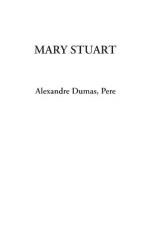But this kindness only increased Chatelard’s confidence: he put down the reprimand he had received to the presence of the queen’s women, and supposed that if she had been alone she would have forgiven him still more completely; so that, three weeks after, this same scene was repeated. But this time, Chatelard, discovered in a cupboard, when the queen was already in bed, was placed under arrest.
The moment was badly chosen: such a scandal, just when the queen was about to re-marry, was fatal to Mary, let alone to Chatelard. Murray took the affair in hand, and, thinking that a public trial could alone save his sister’s reputation, he urged the prosecution with such vigour, that Chatelard, convicted of the crime of lese-majeste, was condemned to death. Mary entreated her brother that Chatelard might be sent back to France; but Murray made her see what terrible consequences such a use of her right of pardon might have, so that Mary was obliged to let justice take its course: Chatelard was led to execution. Arrived on the scaffold, which was set up before the queen’s palace, Chatelard, who had declined the services of a priest, had Ronsard’s Ode on Death read; and when the reading, which he followed with evident pleasure, was ended, he turned—towards the queen’s windows, and, having cried out for the last time, “Adieu, loveliest and most cruel of princesses!” he stretched out his neck to the executioner, without displaying any repentance or uttering any complaint. This death made all the more impression upon Mary, that she did not dare to show her sympathy openly.
Meanwhile there was a rumour that the queen of Scotland was consenting to a new marriage, and several suitors came forward, sprung from the principal reigning families of Europe: first, the Archduke Charles, third son of the Emperor of Germany; then the Duke of Anjou, who afterwards became Henry III. But to wed a foreign prince was to give up her claims to the English crown. So Mary refused, and, making a merit of this to Elizabeth, she cast her eyes on a




